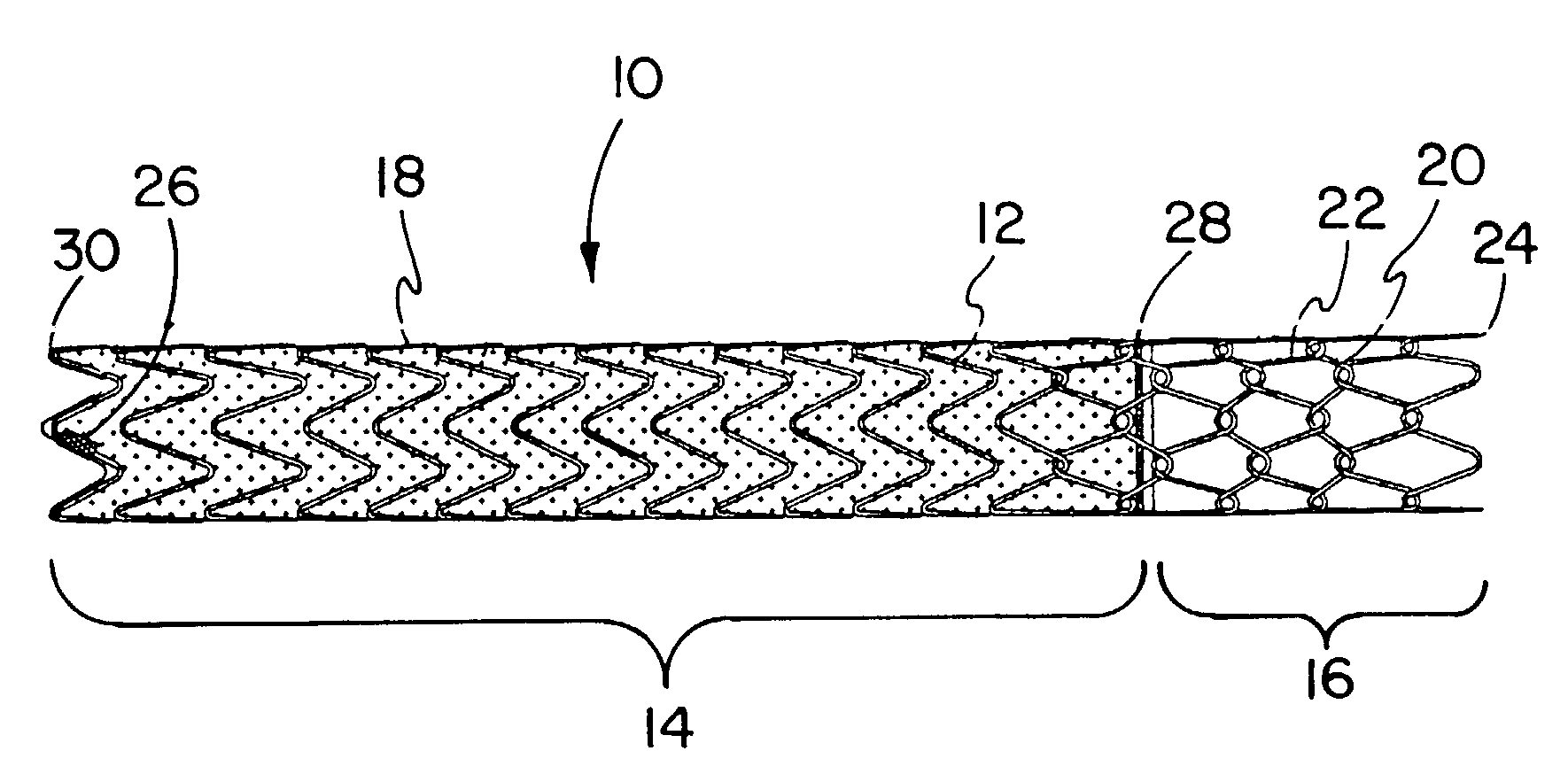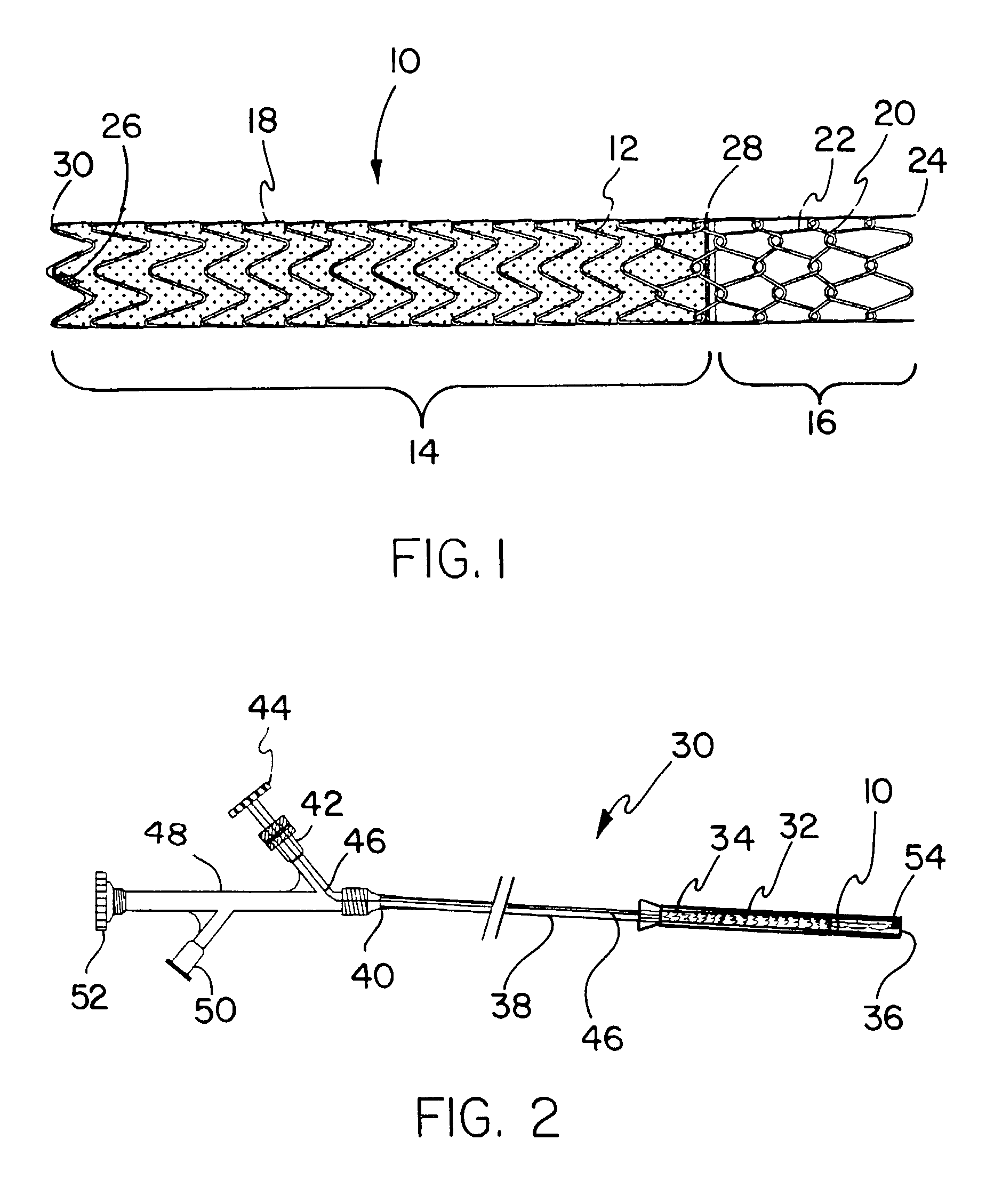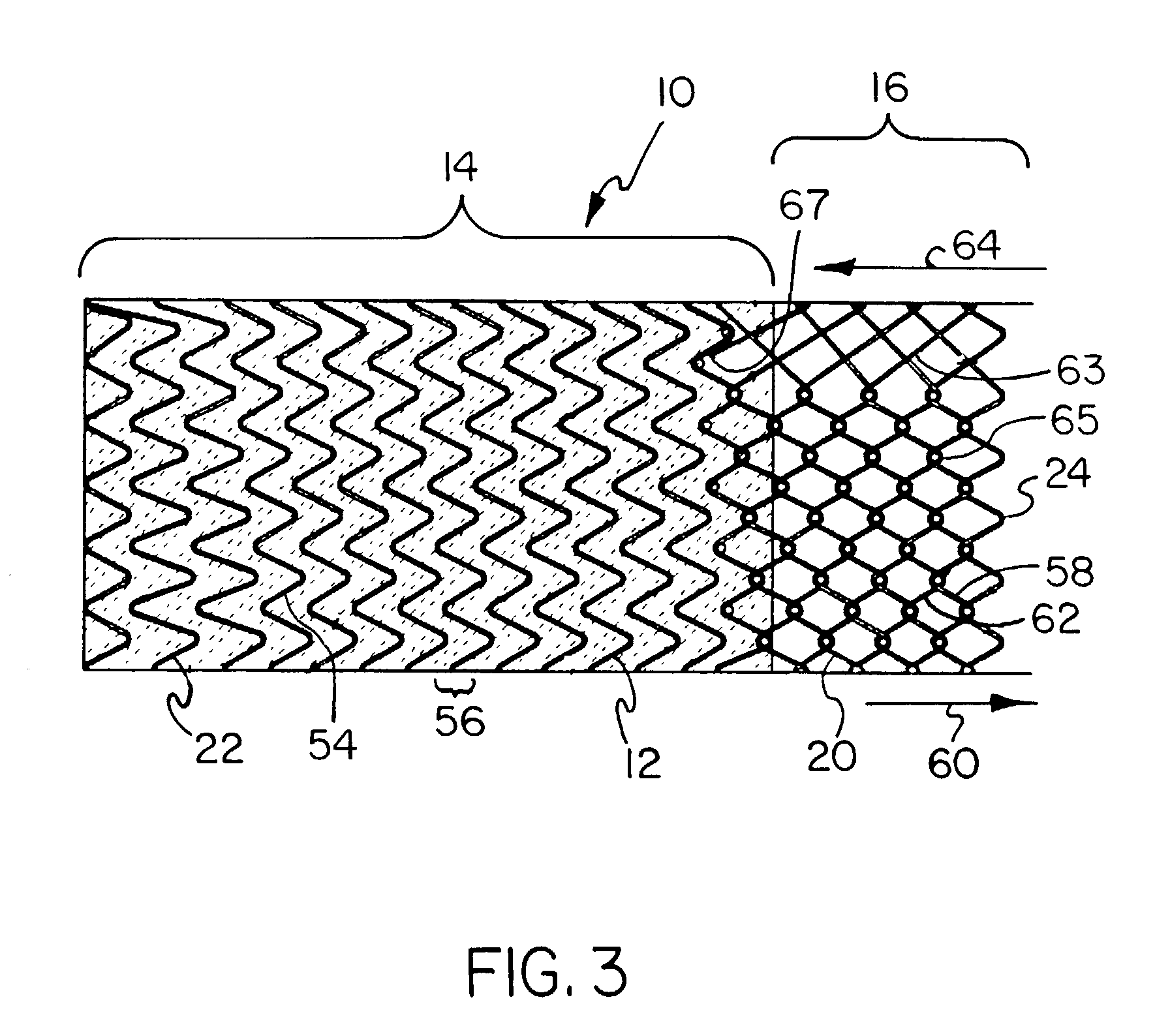Covered endoprosthesis and delivery system
a technology of endoprosthesis and delivery system, which is applied in the field of endoprosthesis, can solve the problems of increasing the fluid pressure in the portal vascular circulation, increasing the risk of recurrence, and requiring a long time to cure, and achieving the effect of recurrence, reducing the risk of recurrence, and reducing the effect of recurren
- Summary
- Abstract
- Description
- Claims
- Application Information
AI Technical Summary
Benefits of technology
Problems solved by technology
Method used
Image
Examples
example 1
[0116]A pin jig is manufactured by turning 304 stainless steel rod stock to an 8 mm diameter. Holes are then drilled in the mandrel (#67 bit) to create the pattern to wind the stent depicted in FIG. 3, with 5 forward facing apices (10 holes) per revolution. Beyond each end of the hole pattern on the mandrel, holes are drilled and tapped to fit 10–32 screws. 1 / 32 inch (0.79 mm) diameter×4 mm length steel pins are then place into these holes, such that 2 mm of the pins are imbedded in the mandrel.
[0117]Nitinol wire of a 0.010″ (0.25 mm) nominal diameter (acquired from Nitinol Devices and Components, Fremont, Calif.) is then wound by hand around this pin jig in the pattern shown in FIG. 3 and the ends of the wire affixed in a tight configuration to the mandrel by 10–32 screws. The wire and the mandrel is then set in a convection oven set a 450° C. for 15 minutes, followed by a rapid quench in ambient temperature water. After the mandrel is allowed to cool, the wire stent is removed fro...
example 2
[0146]A device similar to the one in described in Example 1 is made, however, the inner diameter is 10 mm, the stent pattern has 6 apices per revolution, the wire diameter is 0.011 inches (0.28 mm), and the tapered die has 6 nylon lines (spacing=60°). Testing is perform as described above, with the following results:
[0147]
10 mm DeviceKink Diameter20 mmRadial StiffnessCovered section-0.173 kg / mmdiameterUncovered section-0.258 kg / mmdiameterPermeability143 sec per 100 cc air per 1 cm2materialProfile3.6 mmBent FibrilsAverage ratio V / H = 0.176Internal Corrugation99% of original
example 3
[0148]A device similar to the one in Example 1 is made; however, the inner diameter is 12 mm, the stent pattern has 6 apices per revolution, the wire diameter is 0.010 inches (0.25 mm), and the tapered die has 6 nylon lines (spacing=60°). Testing is performed as described above, with the following results:
[0149]
12 mm DeviceKink Diameter24 mmRadial StiffnessCovered section-0.103 kg / mmdiameterUncovered section-0.157 kg / mmdiameterPermeability111 sec per 100 cc air per 1 cm2materialProfile3.6 mmBent FibrilsAverage ratio V / H = 0.234Internal Corrugation98% of original
PUM
 Login to View More
Login to View More Abstract
Description
Claims
Application Information
 Login to View More
Login to View More - R&D
- Intellectual Property
- Life Sciences
- Materials
- Tech Scout
- Unparalleled Data Quality
- Higher Quality Content
- 60% Fewer Hallucinations
Browse by: Latest US Patents, China's latest patents, Technical Efficacy Thesaurus, Application Domain, Technology Topic, Popular Technical Reports.
© 2025 PatSnap. All rights reserved.Legal|Privacy policy|Modern Slavery Act Transparency Statement|Sitemap|About US| Contact US: help@patsnap.com



